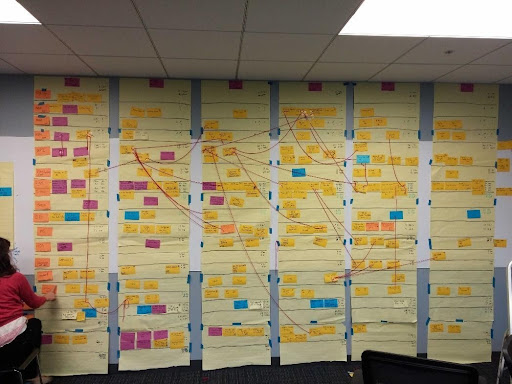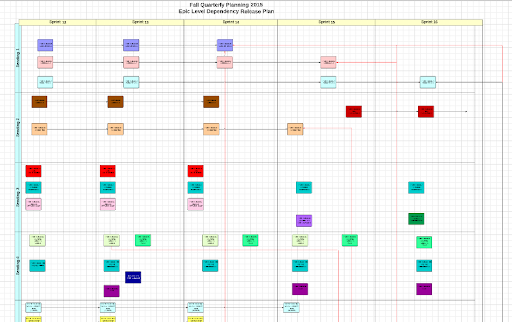The end of the year is the perfect time for teams to audit their processes and evaluate what's working and what's not.
Auditing existing processes helps companies assess, understand, and plan process-based transformations. It's particularly important for companies with hybrid teams—which, let's face it, is most of us these days.
An annual process audit effectively keeps new employees informed about existing processes while ensuring that all necessary team members are involved in planning, creating, and documenting new processes.
Let’s define a process audit and why it's so important to do one at the end of the year.
What is a process audit?
A process audit evaluates whether a process and its resources are being managed effectively. It also helps determine if specific business objectives are being achieved. A process audit is collaborative and focuses on facilitating agile workflows. Components include:
- Identifying objectives: Process audits identify the business objectives you want to achieve, including factors impacting success, and help establish the process for achieving these objectives.
- Defining competencies and capabilities: A process audit defines what competencies and capabilities are needed to deliver process outputs and ensures they are effectively evaluated.
- Delivering results: The primary outcome of any process audit is that it enables you to establish the results being achieved by your processes, how to measure these results, and how to verify the integrity of the results.
Ultimately, what you take away from a process audit is thorough documentation, a review of the processes that are essential to your business, and a plan to pursue process improvement, if needed.
Why you should do a process audit at the end of the year
Regular year-end process audits are crucial to help businesses stay competitive and ensure that their processes remain efficient and effective. A year-end process audit can also determine if your processes are achieving specific goals.
Here are some important reasons why your organization should embrace a year-end process audit in your annual to-do list:
1. To incorporate new team members into existing processes
Hiring trends are constantly changing and shifting, but the reality is that employee tenures are getting shorter. In 2020, the US Labor Bureau reported that the median tenure of employees ages 25 to 34 was 2.8 years. It was just 4.1 years for all employees, regardless of age.
This makes it very likely that new people have joined your organization in the past year and some crucial employees have left. Year-end process audits are the best way to align processes with changing staff and shifting roles.
2. Help identify inefficient or ineffective business processes
While it may be human nature to avoid change, keeping the status quo isn't always good if your processes aren't working well.
Sometimes it's a matter of being better able to scale and communicate, like when DocuSign discovered the process they used for increment planning was inefficient. Their quarterly planning process involved using a grid of sticky notes connected by strings taped to a conference room wall. It was difficult to update and only accessible to on-site employees.
DocuSign ditched the physical planning board and pivoted to Lucidchart. This allowed distributed teams and employees across DocuSign to access the quarterly planning diagram and get more people involved in the planning process.
Switching to new technology and processes ultimately enabled DocuSign to increase its current close rate by 20% and shorten its deal cycle.
3. Reveal where there’s room for improvement
An annual process audit helps identify issues and bottlenecks that you might not know about. Again, this is important because processes can become entrenched, mainly when team members leave and new and existing employees continue doing things the way they've always been done regardless of efficiency.
Dated processes can create bottlenecks and increase time-to-market, allowing competitors to gain an edge. Conducting an annual process audit is a proactive strategy that helps you monitor processes in an ongoing way, ensuring you remain competitive, agile, and relevant.
4. Help identify what software to use
Digital transformation, the adoption and integration of new digital technologies into business processes, fundamentally changes how businesses operate and deliver value. Global spending on digital transformation initiatives reached 1.3 billion in 2020, up over 10% compared with the previous year.
Researching, acquiring, and implementing new software into existing (or new) business processes is top of mind for most businesses. A process audit can help identify the software you're currently using to facilitate different business processes and expose technology gaps.
5. Gives you a chance to document processes
An annual process audit gives you a chance to document your processes. This ensures you can communicate important processes to new employees and that process details don't remain siloed with one or two employees or teams. Up-to-date process documentation is like an insurance policy: preparing your organization ensures consistent workflows even when critical employees are out or unavailable.


6. Sets your organization up for next year’s success
A tangible benefit of the year-end process audit is that it helps prepare your organization and team members for the upcoming year. A process audit gives you the information you need to understand your organization's current capabilities and tie them to four key areas critical to success—leadership, expertise, culture, and governance.
Audits and the accompanying process documentation ensure senior leadership remains committed to streamlining and improving processes. It helps establish the planning and investments needed to achieve process transformation in the coming year.
How Lucidchart can help with an end-of-year process audit
Lucidchart is an intelligent diagramming solution that helps teams visualize processes, systems, and organizational structure. Features like collaborative diagrams allow teams to see roles and steps, understand data in context, and clearly document processes. Pre-built flowchart templates for specific business categories can help you build a process audit that works for your specific business or use case.

Try a Lucidchart template to document your processes.
Go nowAbout Lucidchart
Lucidchart, a cloud-based intelligent diagramming application, is a core component of Lucid Software's Visual Collaboration Suite. This intuitive, cloud-based solution empowers teams to collaborate in real-time to build flowcharts, mockups, UML diagrams, customer journey maps, and more. Lucidchart propels teams forward to build the future faster. Lucid is proud to serve top businesses around the world, including customers such as Google, GE, and NBC Universal, and 99% of the Fortune 500. Lucid partners with industry leaders, including Google, Atlassian, and Microsoft. Since its founding, Lucid has received numerous awards for its products, business, and workplace culture. For more information, visit lucidchart.com.